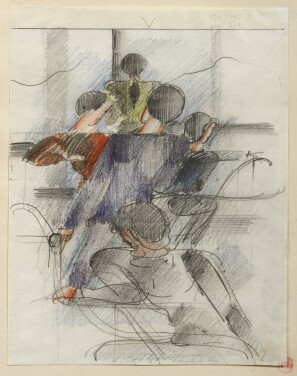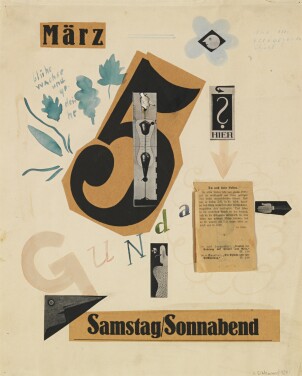Works by Oskar Schlemmer at Sotheby's
Oskar Schlemmer Biography
As “Master of Form” at the Bauhaus – the legendary German art school founded on the idea of aGesamtkunstwerk, or a syntheses of all the arts into a cohesive whole – Oskar Schlemmer described his explorations of space, shape, and gesture as “a kind of artistic, metaphysical mathematics.”
Born on September 4, 1888 in Swabia, Germany, Schlemmer was orphaned in early adolescence and supported himself as an apprentice in marquetry and inlay workshops. He then won a scholarship to study at the Stuttgart Academy of Fine Art where his instructors included the avant-garde color theorist and abstractionist Adolf Hölzel. At the outbreak of the Great War, Schlemmer was enlisted to fight on the Western Front, and after being wounded was moved to a military cartography unit. Shortly after the war, Schlemmer was invited by Walter Gropius to teach at the Bauhaus. There, he developed an interdisciplinary course entitled “Der Mensch” (“The Human Being”) which investigated the complex relationships between the body and its physical and temporal surroundings. In 1922, Schlemmer debuted his best-known work, the Triadic Ballet, which would become the most widely performed avant-garde dance piece of the period. In three acts dominated by three striking background colors—bright yellow, pink, and finally black—three dancers in starkly geometric costumes enacted what Nadya Lev called “a transhumanist bacchanal set in non-Euclidean space [which] reimagined dance in ways that feel futuristic even today.” Schlemmer's “figurines” for the piece were then shown at the 1930 Bauhaus exhibition at the Museum of Modern Art in New York. In 1933, Schlemmer resigned from his teaching position under pressure from the Nazi regime, which required artists to heroicize the “ideal” human form. His works were featured in the notorious Degenerate Art Exhibition in 1937 and he remained in a state of “inner emigration” until his death in Baden-Baden on April 13, 1943.
Schlemmer's 1928 painting Idealistic Encounter made news when it sold for $1.47 million at Sotheby's in 1998. His work can also be seen in the permanent collections of such museums as the Getty in Los Angeles, the Thyssen-Bornemisza in Madrid, and the Albertina in Vienna.












